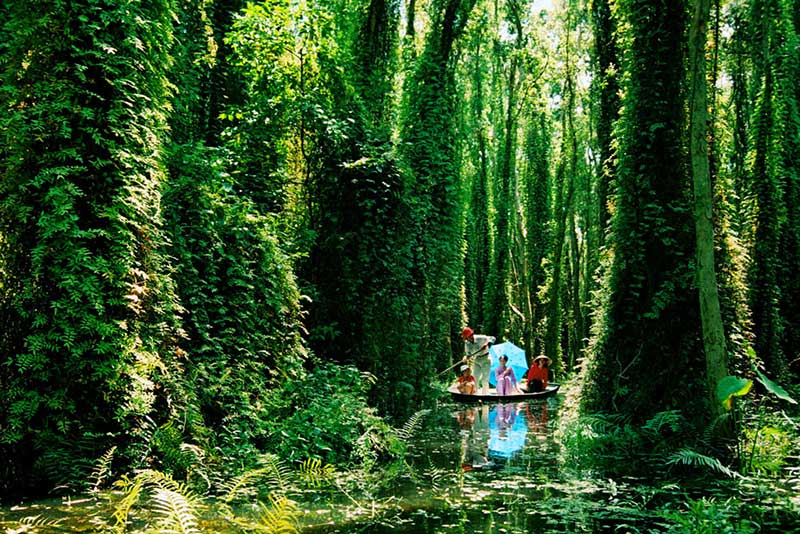U Minh Thuong National Park is an important natural conservation area located in the Mekong Delta, in Kiên Giang Province, Vietnam. Established in 2016, this national park plays a crucial role in preserving wetland ecosystems, supporting eco-tourism development, and protecting the region’s biodiversity.
1. Location and Area
Location: U Minh Thuong National Park is situated in the southwestern region of Vietnam, in U Minh Thuong District, Kiên Giang Province. It is close to the U Minh Hạ Forest, which is famous for its wetland ecosystems typical of the Mekong Delta region.
Area: The national park covers an area of approximately 21,000 hectares, including wetlands, swamps, lakes, and a network of canals.
2. Ecological Features
Wetland Ecosystems: This is the dominant ecosystem of the national park, featuring typical wetland plants such as cajeput trees, reed grasses, and various other plant species. These plants not only protect the soil but also provide habitats for a wide range of wildlife.
Wildlife: The national park is home to many rare animal species, particularly migratory birds and animals that thrive in wetland environments. Notable species include storks, herons, cormorants, turtles, fish, and shrimp.
Flora: In addition to wetland plants, the park also boasts a rich diversity of wild plants, aquatic plants, and medicinal herbs, which are valuable for research and conservation.
3. Role in Environmental Protection
Soil Erosion Control and Land Protection: The wetland forests in the park play a key role in water retention, preventing soil erosion, protecting agricultural land, and maintaining the flow of rivers and canals in the area.
Water Protection: U Minh Thuong National Park also plays a vital role in protecting water quality, regulating water flow, and maintaining aquatic ecosystems in the region.
4. Eco-Tourism Activities
Eco-Tourism: The park attracts tourists with its pristine beauty, diverse ecosystems, and fresh air. Visitors can engage in activities such as exploring cajeput forests, bird watching, boating along the canals, and discovering the unique flora and fauna of the area.
Environmental Education: Tourists also have the opportunity to learn about the importance of wetlands in environmental protection and the conservation of biodiversity. Tourism activities help raise public awareness about nature conservation.
5. Conservation and Management
Management and Conservation: U Minh Thuong National Park is managed strictly to protect its valuable ecosystems. Local authorities and conservation organizations are working diligently to preserve and enhance programs aimed at protecting wildlife, especially migratory birds and aquatic species.
Wildlife Protection Programs: Various wildlife protection initiatives, including efforts to conserve migratory birds and other wild animals, are underway to maintain biodiversity within the park.
6. Importance to the Local Community
Sustainable Development: U Minh Thuong National Park not only plays a role in environmental protection but also contributes to the sustainable economic development of the local community. Eco-tourism development helps improve the livelihoods of local residents while fostering the protection of natural resources.
7. Conservation Programs
Bird Conservation Programs: U Minh Thuong also implements programs to protect rare bird species, including migratory waterfowl, thereby helping preserve the wetland ecosystem of the area.
Conservation of Endemic Flora and Fauna: Programs to protect endemic species of flora and fauna are being developed to maintain the biodiversity of the park.
With its ecological, environmental, and tourism values, U Minh Thuong National Park plays a vital role in environmental protection and sustainable development in the Mekong Delta region.

